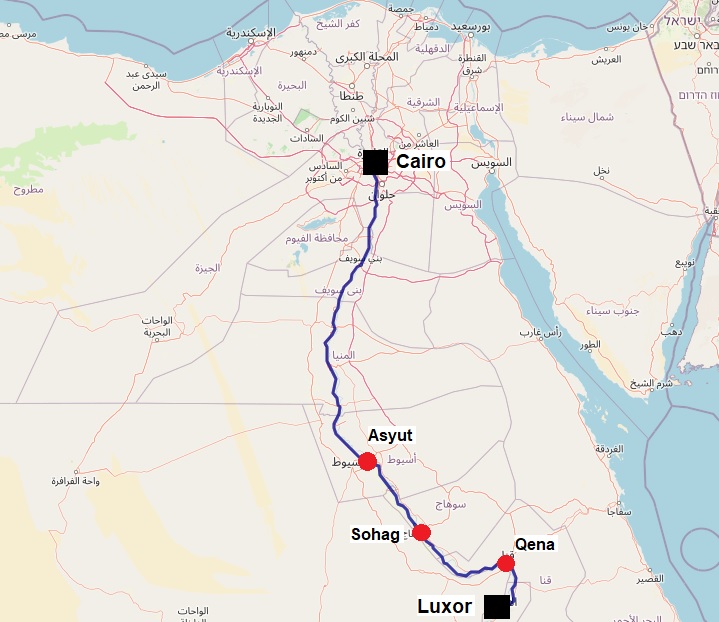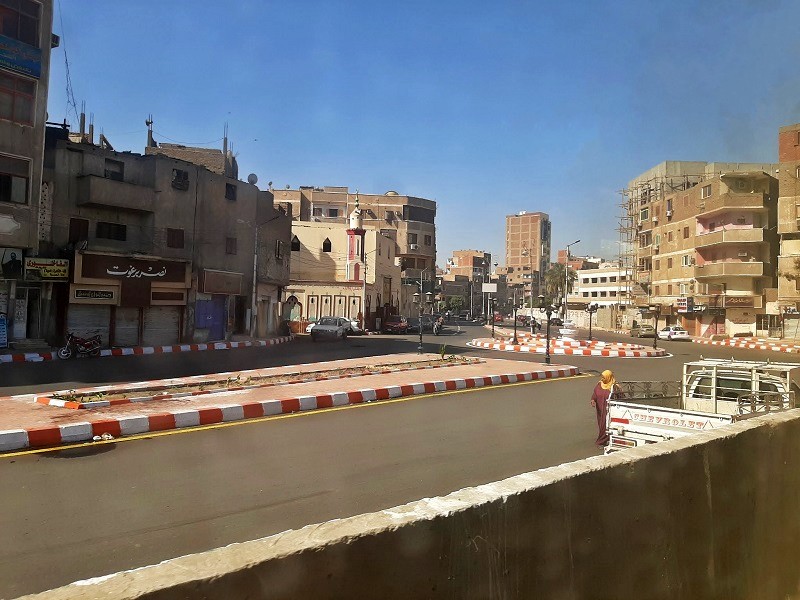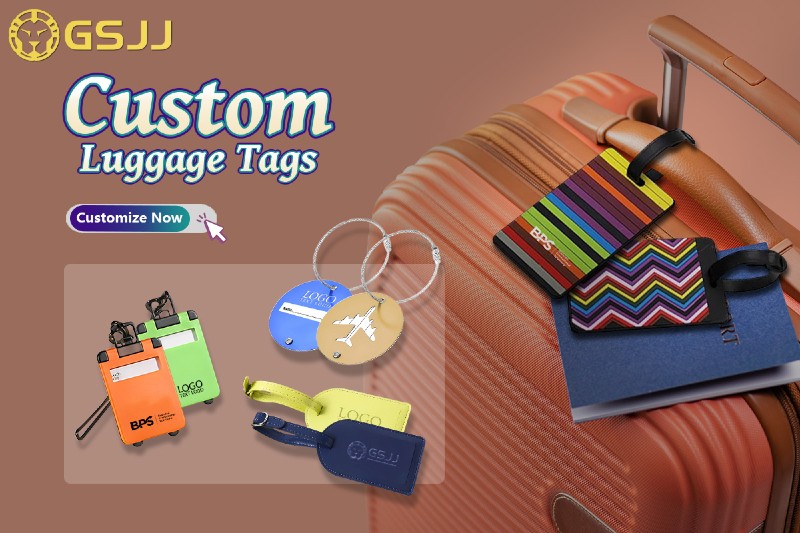Review: Daytime Train Luxor to Cairo, Egypt
This review details my trip on a daytime train in Egypt, travelling from Luxor to Cairo.
Luxor to Cairo train
After an amazing Nile river cruise and wonderful couple of days in Luxor, it was time for me to travel back to Cairo.
If you want to travel by train between Luxor and Cairo, you can choose between the Abela Sleeper Train (formerly called the Ernst Watania Sleeper Train) or several daytime trains that link these two Egyptian cities.
Going to the station
My journey began at Luxor station, which is within walking distance of some of the main downtown hotels in the city such as the amazing Winter Palace.
There is a security check in order to enter the station, although this is a process that never really takes longer than a minute.
Before embarking on a journey, a small but thoughtful detail can make your trip more reassuring: Adding personalized luggage tags to your bags.
During security checks at a railway station or airport, your luggage will stand out with a personalized luggage tag. Not only because of its unique design, but also due to the exclusive personal information engraved on it.
Personalized luggage tags are not only a reflection of your personality, but also a smart choice to prevent loss during your journey. They act as a silent guardian, ensuring your luggage can be easily recognised, even in a crowd. This makes every step of your travels worry-free, allowing you to fully immerse yourself in the wonderful moments of the extraordinary journey that’s ahead of you.
At Luxor station
Once I arrived at Luxor station, I made my way to the departure platform and spent some time observing the various trains arriving and departing.
You’re likely to encounter a diverse range of trains while travelling with the Egyptian Railways, as they operate a mix of second-hand coaches sourced from countries like France and Spain, alongside newly manufactured trains made in Russia, China, or locally in Egypt.








Boarding
Some 10 minutes before its scheduled departure time, my express train bound for Cairo arrived at the station of Luxor, having started its journey earlier in the day in Aswan.
I had easily managed to book my Luxor-Cairo train ticket online beforehand, paying around $10 for a first class seat.
An amazing deal for a journey of almost ten hours, although prices for train tickets have recently gone up in Egypt after the country introduced more expensive ‘foreigner fares’ for non-Egyptian citizens, with a Luxor-Cairo ticket now costing $45 in first class.
First class
The 8.40am express train to Cairo I was booked on turned out to be an older Spanish train.
Indeed, the wear and tear throughout the coach was quite noticeable, and some of the seats appeared grubby.
First class seats have a 1-2 configuration and I was lucky I got a solo seat assigned.
Although the seats are rather worn, they do have a generous recline and are actually quite comfortable.
When I addressed the conductor about the issue, he came back soon after together with an on-board mechanic armed with a screwdriver, who managed to fix the reclining mechanism within minutes.
Fortunately, the air-conditioning inside the wagon worked like charm, although you shouldn’t expect any other amenities like power sockets, let alone Wi-Fi internet, on these older trains.



Second class
During the journey, I also took a look inside a second class coach on our Egyptian train.
In second class, seats are in a two-abreast configuration and have noticeably less shoulder room and recline.
However, the amount of legroom seemed quite good and some of these second class wagons did appear to be in a much better condition than my grubby first class coach.

Luxor to Cairo by train
Train 2011 – Wagon 1, seat 15
Departure: 8.40am – Arrival: 6pm
Duration: 9h20m – Distance: 670 kilometres

Departure
Qena
After a while we arrived at our first stop in the city of Qena.
One of the fun things about taking the train is Egypt is observing the local life in the villages, cities and on the station platforms.




Crossing the Nile
Nagaa Hammadi
Nagaa Hammadi, which is also spelled Naga Hammady, is one of the longer stops on the route to Cairo.
Again, it was fun to watch the flurry of people disembarking and boarding the train at this station, which notably included some military personnel in desert camouflage uniforms.


Bar wagon
The bar wagon is a fun space to visit as you are almost assured to strike up a conversation with one of the many local Egyptian passengers you can find there.


Toilet
Although at first sight the toilets on my Luxor-Cairo express train looked grim, they were actually surprisingly clean.
Sure, the toilet itself is highly basic, but the floor and toilet seat were spotless, toilet paper was available, and there was water running from the sink.
It may not look like much, but I was pleasantly surprised as I expected something way worse given how old the train felt.

Slow speeds
Work
About halfway through the journey I started to get bored and decided to get some work done on my laptop.
The seats in first class have airplane-style fold out tray tables in the armrests, which aren’t very stable but at least big enough to place your laptop on.
As 4G roaming coverage was good throughout the entire journey, I managed to get a few hours of productive work done on the train.

Asyut
The most important stop between Luxor and Cairo is Asyut, a city of well over 500,000 inhabitants.



On to Cairo
The rest of the journey went by fast after our departure from the crowded station of Asyut.
I worked a bit more on my laptop, and enjoyed some fabulous sunset views from the window.

Giza station
All express trains from Luxor to Cairo stop at both of the city’s main stations: First at the station of Giza in the southern outskirts of Cairo, and finally at Ramses station, the main railway station of the Egyptian capital.
Obviously, the train station of Giza is better located if you are staying near the Pyramids, while Ramses station is better situated if you are staying in the city centre or in the medieval old town of Cairo.




Metro
As I previously departed from Cairo Ramses station at the start of my trip, I decided this time to get off at Giza station so I would have experienced both.
At Giza station, it was an easy interchange to the Cairo metro for the 6 stops to Sadat station for my hotel on Tahrir Square.


Conclusion
However, my Egyptian express train was grubby, old, showed significant wear and tear, and lacked modern amenities.
Trip report index
This article is part of the ‘Walk Like an Egyptian: A Grand Tour of Egypt‘ trip report, which consists of the following chapters:
1. Red-Eye Ramblings of a Late Night Flight to Cairo
2. A Visit to the Pyramids of Giza by Camel
3. Review: Sofitel Nile El Gezirah, Zamalek, Cairo
4. Exploring the Medieval Old Town and Islamic History of Cairo
5. Visiting the Museum of Egyptian Antiquities in Cairo
6. Mar Girgis: The Churches of Christian Old Cairo
7. Review: Ernst Watania Sleeping Train Cairo to Aswan
8. The Ancient Quarry of Aswan and the Unfinished Obelisk
9. A Boat Ride From Aswan to the Temple of Isis at Philae
10. A Visit to the Aswan High Dam and Lake Nasser
11. A Visit to the Nubian Village on Aswan’s Elephantine Island
12. Aswan Guide: A Visit to Egypt’s Most Stunningly Located City
13. A Half Day Trip From Aswan to Amazing Abu Simbel
14. Nile River Cruise Guide: All Info for Your Egypt Boat Trip
15. Review: M/S Princess Sarah Nile River Cruise Ship
16. Nile Cruise: Sailing From Aswan to Kom Ombo
17. A Visit to the Ancient Crocodile Temple of Kom Ombo
18. A Visit to the Temple of Horus at Edfu
19. Nile Cruise: Sailing From Edfu to Luxor
20. Luxor, Egypt: Visiting the Sights of Ancient Thebes
21. A Visit to Luxor’s Giant Temple Complex of Karnak
22. Visitor Guide to Wonderful Luxor Temple
23. Valley of the Kings: A Visit to Luxor’s Ancient Necropolis
24. The Temple of Hatshepsut: A Visit to a Unique Mortuary Temple
25. Review: Sofitel Winter Palace Hotel, Luxor, Egypt
26. Review: Daytime Train Luxor to Cairo, Egypt (current chapter)
27. Review: Steigenberger Hotel El Tahrir, Cairo
28. A Visit to the Pyramid of Djoser and the Saqqara Necropolis
29. A Visit to the Dahshur Pyramid Complex
30. Memphis: Exploring the Old Capital of Ancient Egypt
31. From Cairo to Alexandria by Train: My Travel Experience
32. Review: Paradise Inn Le Metropole Hotel, Alexandria, Egypt
33. Alexandria: A Visit to Egypt’s Historic Mediterranean Port City
34. Egypt: Impressions and Reflections After My Two Week Trip
35. Epilogue: Safety and How to Deal With Street Hassle in Egypt






















